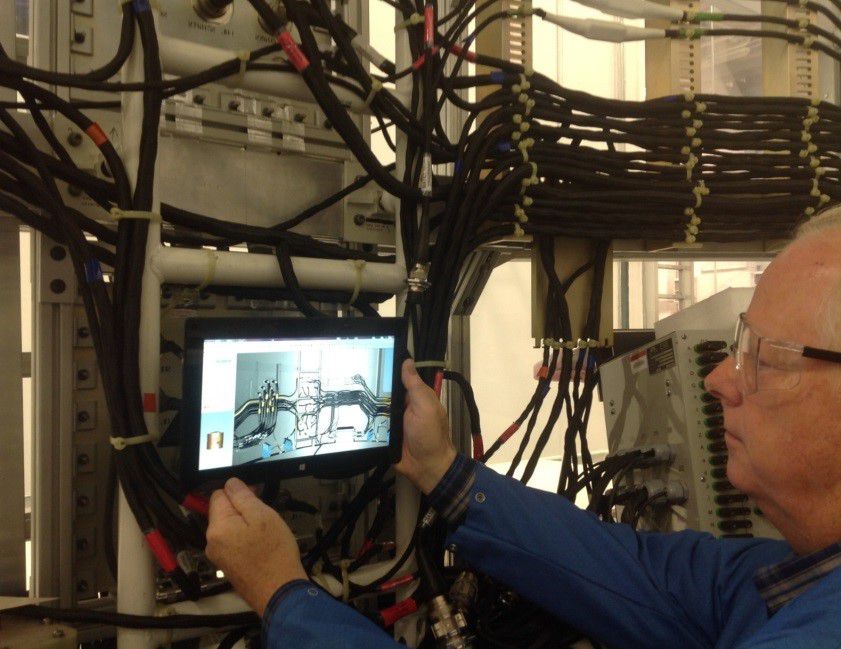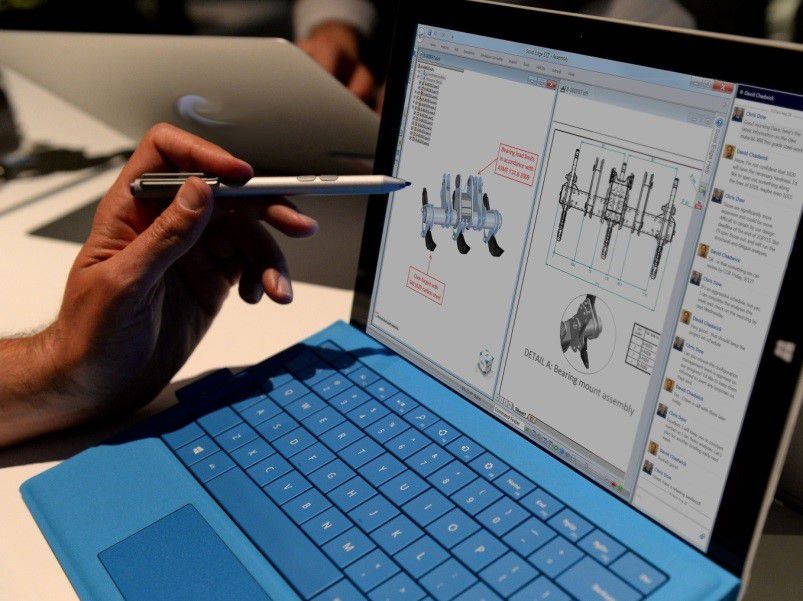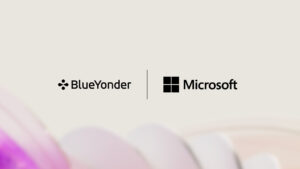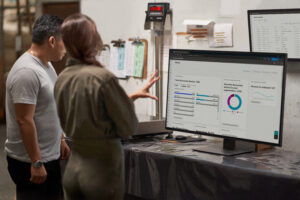Design from anywhere: the promise of mobile computing for design engineers
The world of design is an exciting place to be. And for me, to be a part of the technology world bringing forward new innovations for designers themselves is especially rewarding. What they can do now was simply not possible when I was an engineer years ago.
Design engineers today, though, are also facing a new set of pressures: there is a fundamental shift from designing single purpose products to creating solutions. This is why trends in both the technology world and product development—from the Internet of Things and insights to social innovation and 3D-printing—are converging. We need to take advantage of the latest information technologies to fulfill the demand for solutions. The demands of the market are impacting not only the way we design, but what we design.
Designing for the new world of solutions
Consumers and businesses now want more from their products. They expect solutions, solutions to their real-world problems in life and work. A watch is no longer something that just tells time. It needs to do more. It needs to be a solution to help me organize myself to save time, help me make better lifestyle choices, and make my life easier.
In the industrial manufacturing world, a task-specific machine on an assembly line must be flexible, to be programmed to change, to monitor its own performance, and provide a warning if it is likely to fail. The machine must solve a real world problem: reduce downtime, reduce capital expenditure and increase quality. This is now the expectation for designers—design solutions versus products, solutions that solve real world problems – usually with automation and integration.
To focus on designing solutions, engineers, and designers need to be more agile and accelerate innovation. The advancements in mobility are helping make that possible in very powerful ways: they can now design at the point of use, with a customer onsite, or in a factory, and so forth.
The promise of mobile computing
Mobility enables designers to be more responsive, to learn more, and speed up the time to design a solution. It’s the way you can get in front of your products and resolve issues, find solutions or discover ways to create optimizations.
It’s how you can immerse yourself into a customer or your own products, to discover ways to invent new solutions, and start designing for future needs. It allows you to be more productive in the moment, wherever you might be. And its benefits continue along the entire product lifecycle from design through to service.
But while mobility in general is the new normal, there remains the question if it’s attainable in the design world? Is engineering with real CAD is truly possible on a mobile device? It’s true that while smartphones are making strides, they still lack the performance, capacity, and size to be a viable solution. Tablets, on the other hand, offer a more workable size but depending on the operating system, can lack the application fidelity and support. Laptops have become too cumbersome to be truly mobile in all work situations meaning that designers are carrying many devices just to perform all tasks efficiently. It begs the question: are designers truly mobile if they are carrying so many fit-for-purpose devices? Surely there is a better way.
Mobile design and engineering with Surface Pro 3
The Microsoft Surface Pro 3 makes it possible for design engineers to be truly mobile, offering the performance of a workstation needed for complex 3D computer-aided design (CAD) and analysis with size and portability of tablet. Running Siemens’ Solid Edge on the Surface Pro provides the power, performance and access to all features so you can design projects while mobile, either offline or online. And if you, a customer or supplier needs to quickly view Solid Edge part and assembly models and drawings, the free Solid Edge Mobile Viewer provides a touch first, quick and easy tablet experience.
We call Surface Pro 3 the tablet that can replace your laptop. And in the case of designers and engineers, it can do even more. It can be used as either your primary design machine or an extension of it, helping you improve design productivity both in the office and when mobile.
Here are 10 key advantages of Surface Pro 3 for design engineers:
1.Excellent power-to-weight ratio: workstation power in a lightweight tablet.
2.You can run multiple monitors. Two external screens plus Surface Pro 3’s screen.
3.It comes with precision input so you can have a keyboard, mouse and pen and use these all in Solid Edge with great accuracy. You can even use touch controls at the same time; whichever feels natural or gives you the fastest result.
4.It has a screen ratio that matches paper sizes for increased reading fidelity and screen utilization.
5.It runs Windows applications and works across multiple applications and devices.
6.It comes with built-in device security encryption and control, including management of plug-in memory devices.
7.You can have multiple user profiles on a single device.
8.It has a modern design aesthetic, so it definitely looks the part.
9.It has great accessories if you need ruggedization
10.Specific to this industry, it offers plug-and-play for 3D printers and scanners.

With Surface Pro 3 and Solid Edge, the promise of mobile computing is now available, enabling you to design from anywhere. If you’d like to learn more, you can watch a recent on-demand webinar with myself, ENGINEERING.com, Siemens, and industrial design firm Trlby Innovative.
You can also hear from Trlby’s founder Bob Mileti in this video talking about how he is using the Surface Pro 3 with Siemens Solid Edge, helping him create and edit complex designs of more than 1,000 parts. Or read how aerospace firm Orbital ATK is creating more rockets in less time by moving its 3D product data to the shop floor with Surface Pro.
You can also see all of this in action first hand. Join experts from Siemens and Microsoft at one of 11 productivity summits being held now through May in different cities across the U.S. and Canada. You’ll learn how you can apply the latest trends in mobility, 3D printing and 3D design to make changes in the way you think about your product development stages.
To learn more about the Surface Pro 3 go here. And for a limited time only, customers who purchase Solid Edge will receive a Surface Pro 3 for FREE through June 30.







